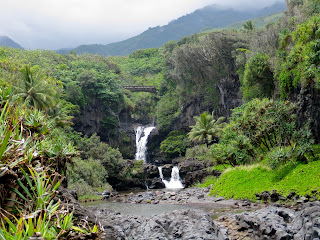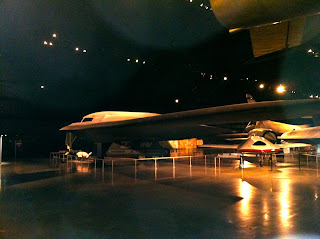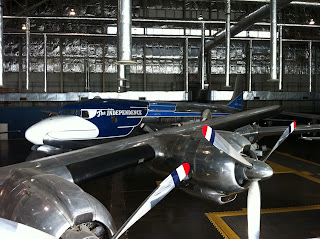With all that excessive muscle car power under the hood, I turned up my "Britney Spears' Greatest Hits" to tackle the long drive through the rural Georgia countryside. And kept the windows rolled up.
The modern Interstate Highway system, begun in the 1950s by President Eisenhower, has the benefit of easing long distance road travel, but also means you no longer pass through all those tiny towns along the way. To survive, many of those towns try to promote any unique characteristic they have to get you to pull off the highway and spend a few dollars. One such town that I've passed many times while driving to Augusta, which promotes its Claim to Fame with Cultural Heritage signs along the Interstate, is Harlem, Georgia: the birthplace of Oliver Hardy.
I finally made time to visit this quiet village on my most recent work trip to the area. Though born in Harlem in 1892, Oliver Hardy soon moved away with his mother (his father passed away when he was just ten months old), who became the manager of the Baldwin Hotel in Milledgeville, Georgia, where they settled in 1903. Here he got to meet scores of traveling entertainers, from the circus and the theatre, who passed through town and stayed at the hotel where his mother worked. Catching the performing bug, Hardy eventually moved further out to Hollywood, where he was randomly partnered with English comedian Stanley Laurel to become what turned out to be one of the greatest comedy duos ever assembled.
Though Oliver Hardy moved away when he was quite young, Harlem still capitalizes on the fame of the rotund Golden Age comedy film star with the small Laurel and Hardy Museum and a yearly Oliver Hardy Festival on the first Saturday of October. The Festival includes a large parade and a look-a-likes contest! (How can you have a true nostalgic festival without one!?) Sadly, I was missing this festival by just three days. (Sometimes I guess it DOES pay to research your trips before you take them.)
The Museum focuses mainly on old photographs and other merchandise and artistic interpretations (dolls, statues, etc.) of the comedy duo from across the decades, with very little actual film memorabilia. The highlight for me, who remembers seeing many a Laurel and Hardy film as part of the morning TV lineup in the mid-80s, was the collection of a large percentage of their works on either DVD or VHS, to be viewed onsite. I have only vague recollections of their sketches, not remembering names or plot lines, but the friendly old lady volunteers who staff the Museum were more than helpful in selecting their favorites for me to watch, as the two-room facility was nowhere near crowded on the dreary afternoon I stopped in.
The comedy of Laurel and Hardy represents a much different era. Some may find it cheesy slapstick. But I think the family-friendly lack of "toilet-humor" holds up to the test of time, is refreshing, and does not in the least bit diminish the enjoyment one gets from watching the mismatched pair spend a majority of the 29-minute film trying to push a player piano up several flights of stairs, thwarted every time by the most predictable of obstacles in the Academy Award winning "The Music Box " (1932), perhaps their most famous work.
Clearly this small museum and festival can't revitalize the economy of this tiny Georgia town. Nor will it draw the international fame that The Globetrotters brought to the Harlem of the North (even though both have appeared on Scooby Doo). But the residents certainly exhibit an unmatched pride in their Favorite Son. And really that can be enough to prevent an oft overlooked corner of the state form falling into complete disrepair, keeping the town and its tangential ties to Americana itself from fading away completely from our collective memory.





















































